Absorb the Silver Circle Saga Geopark.
| Private Tour |
Enjoy endless landscapes of mossy lava fields and birch-grown lava hills with the comfort of a private tour and make the most of your day by choosing from various bookable activities to add.
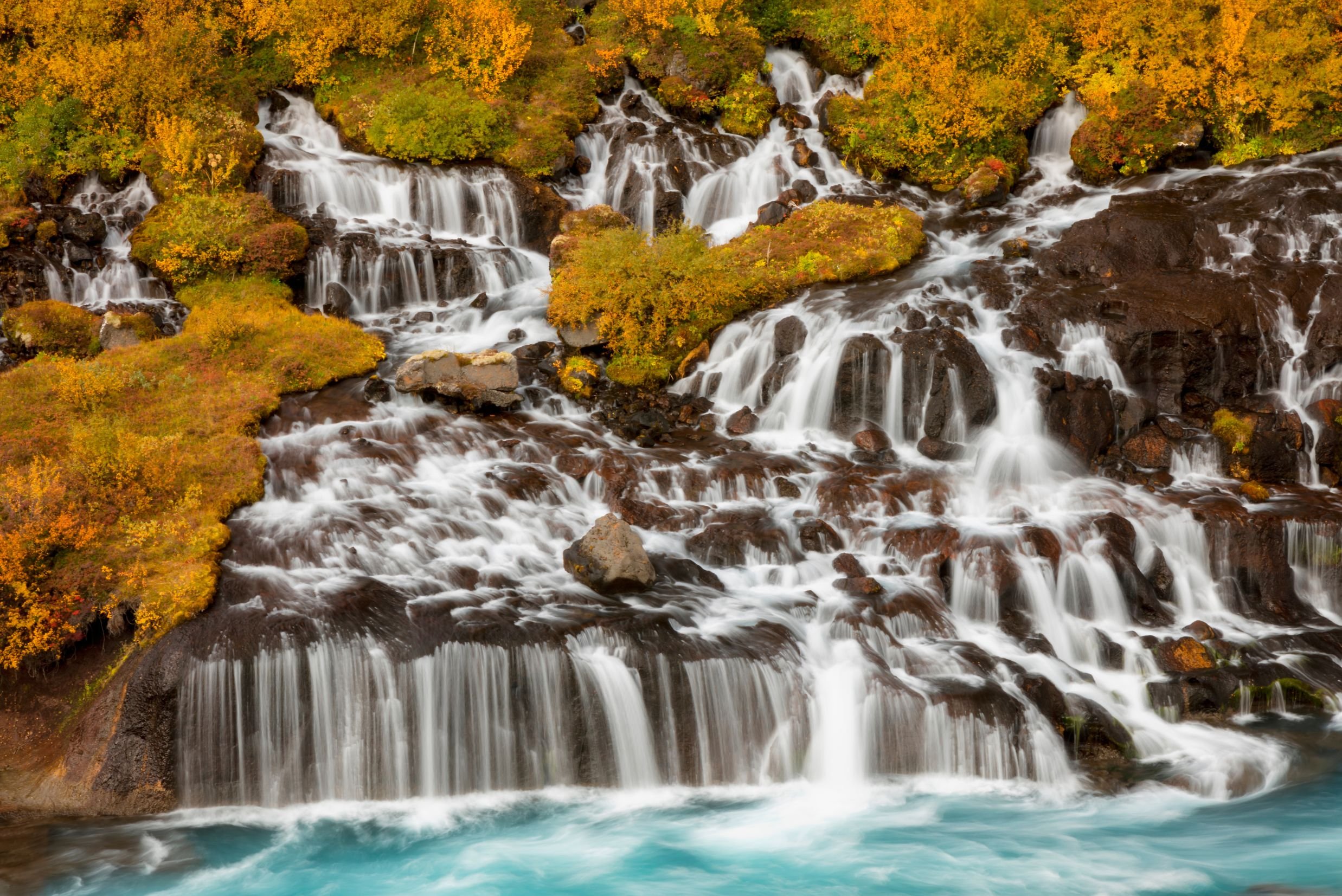
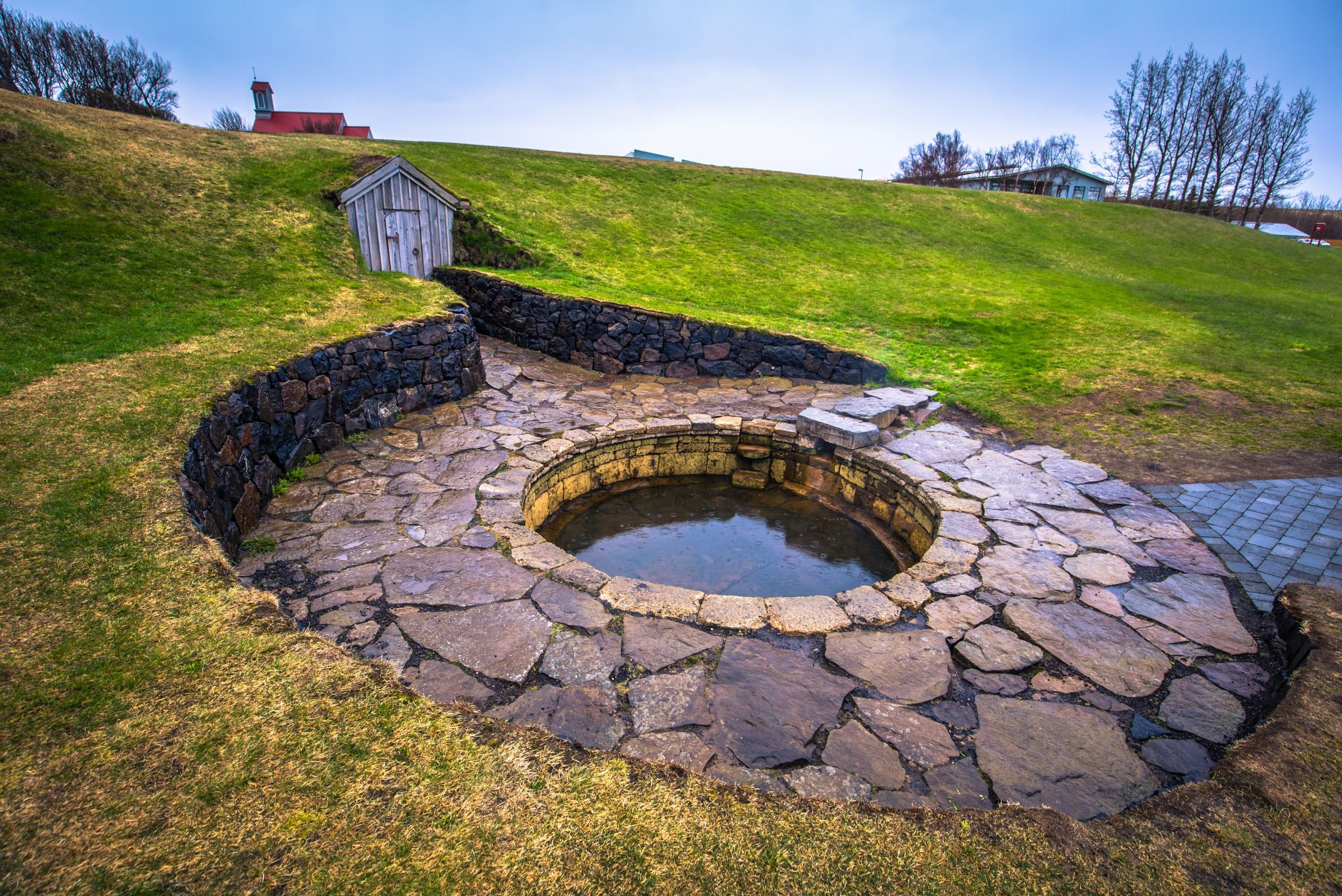

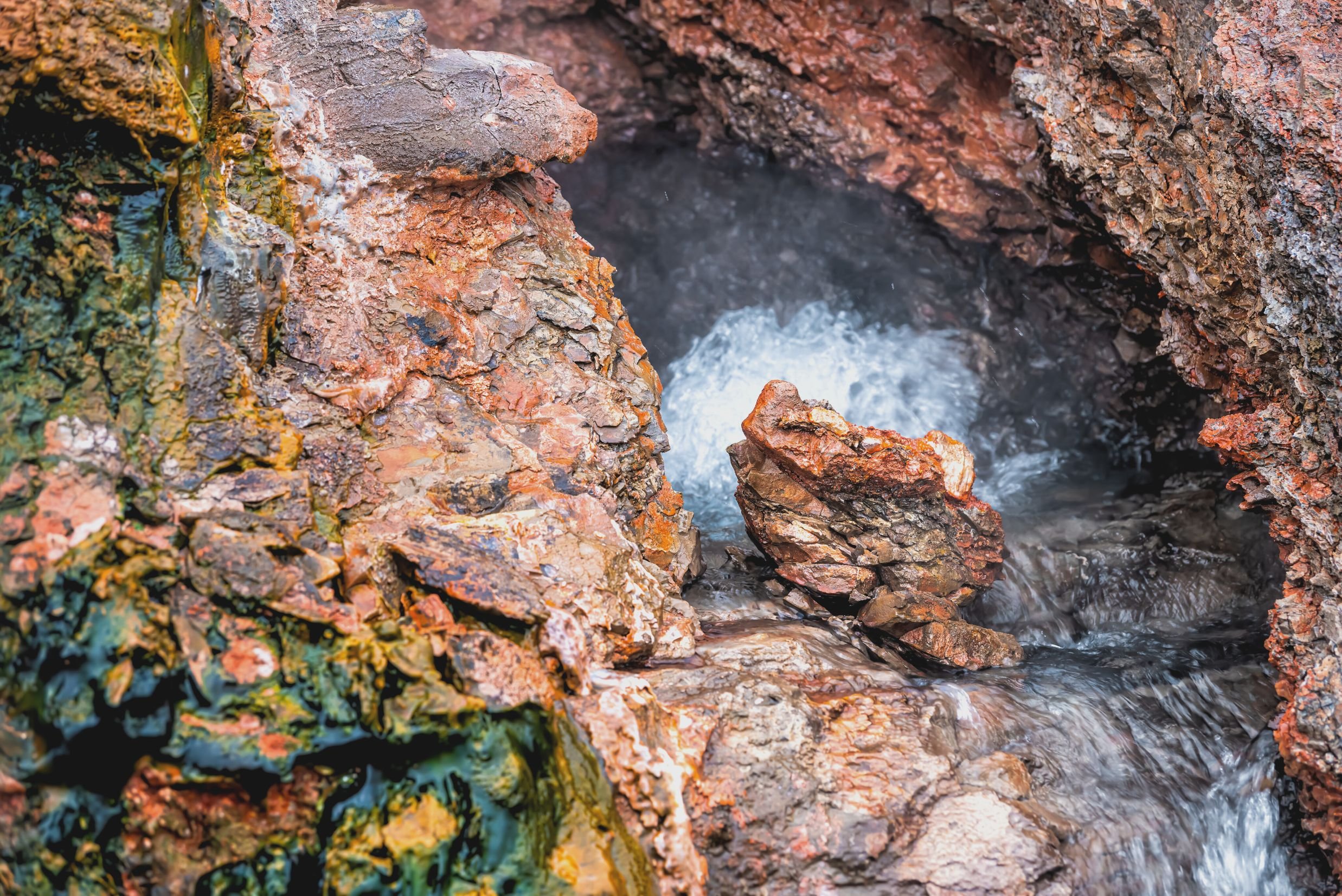
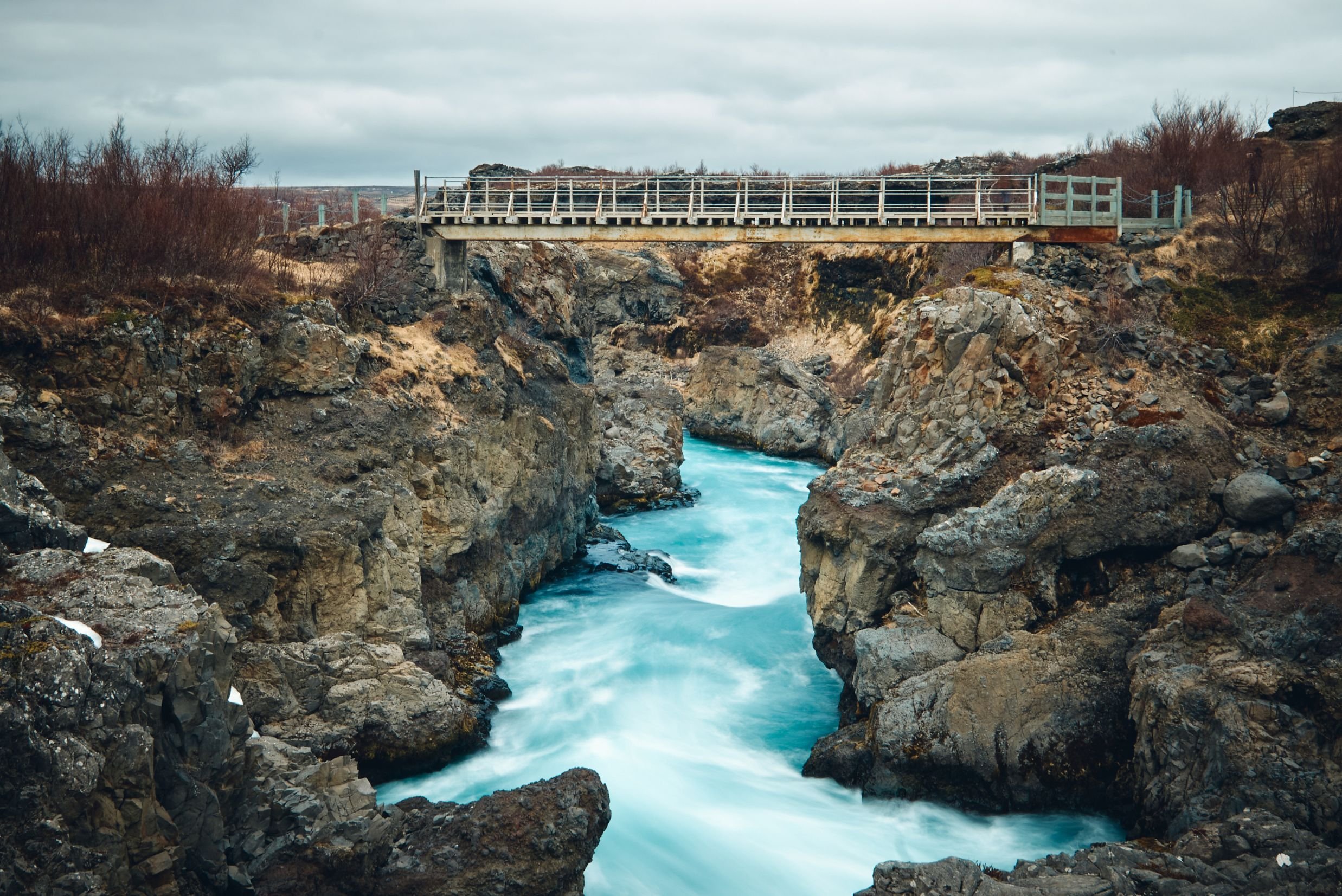


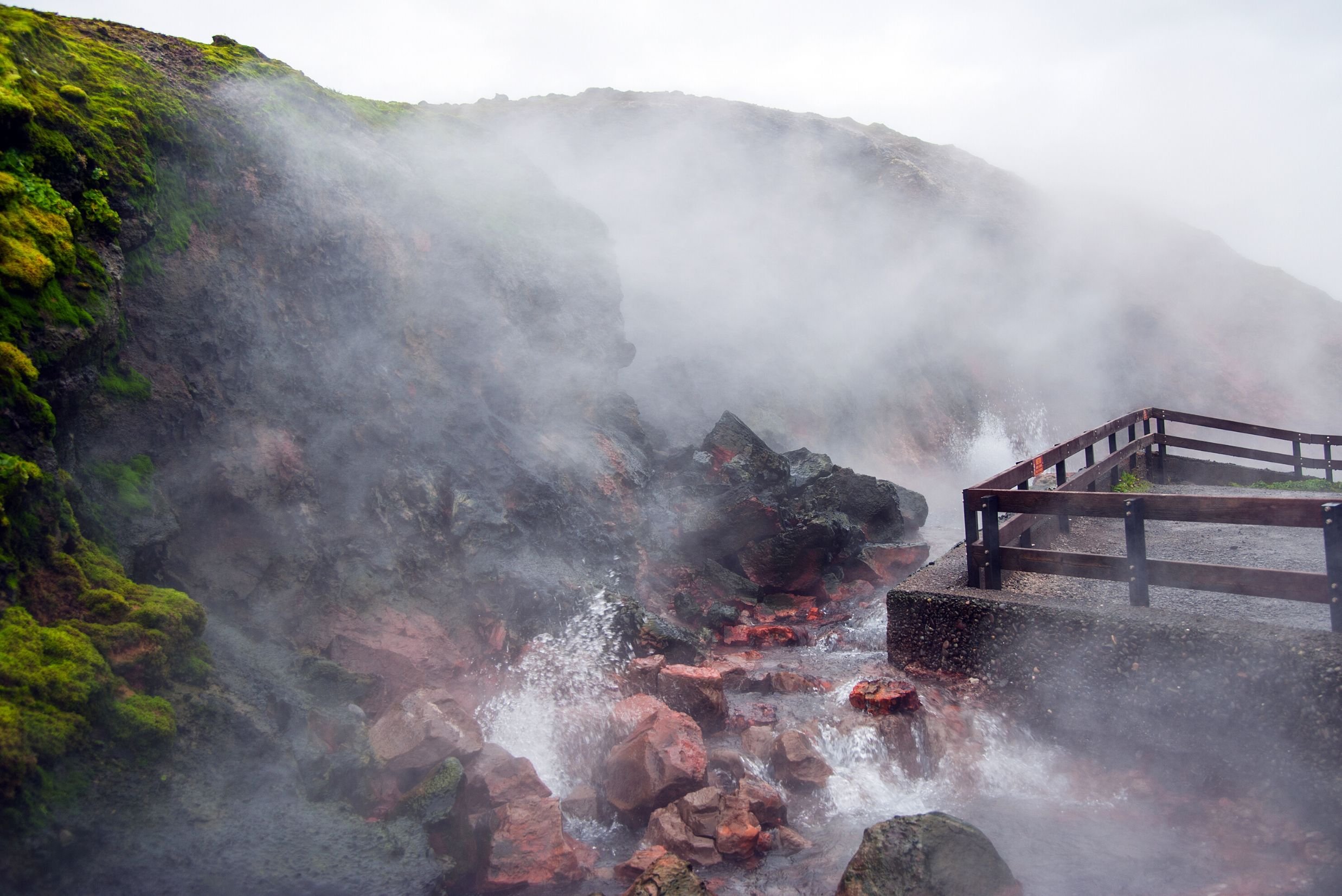
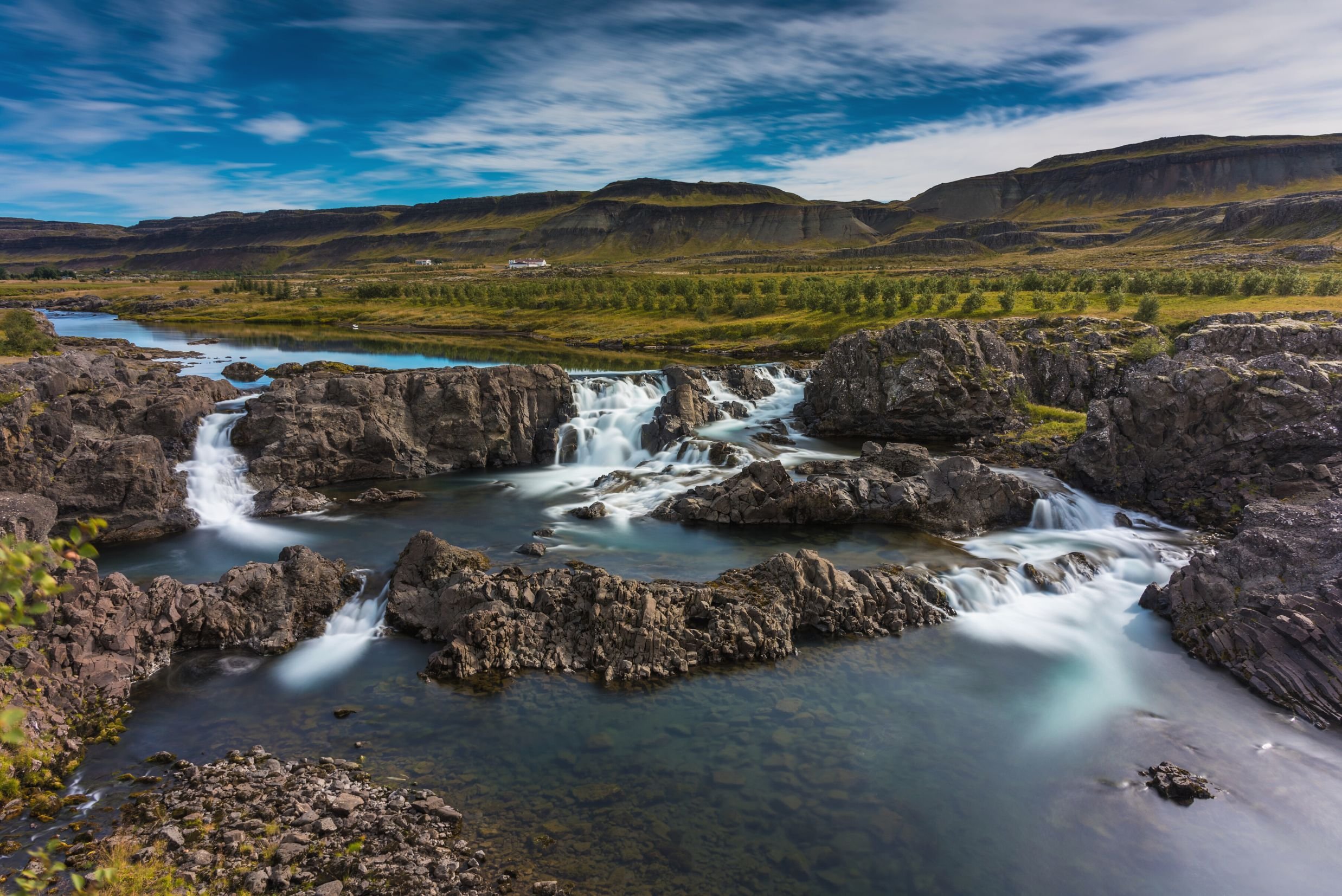






Highlights.
-
Hvalfjarðargöng is a road tunnel under the Hvalfjörður fjord and is the first underwater tunnel in Iceland. It is among the longest underwater road tunnels in the world, being 5,770 m (18,930 ft) in length and of it, 3,750 m (12,303 ft) lies beneath the seabed. Its deepest point reaches 165 m (541 ft) below sea level.
-
By the shore of Borgarfjörður fjord is the town Borgarnes. This is the largest town in the Borgarbyggð municipality, with a population of about 2000.
Borgarfjarðarbrú bridge, which opened in 1981, is the second-largest bridge in Iceland after Skeiðarárbrú bridge, being 520 m (1,706 ft) in length. This bridge connects the main road between the northern and southern parts of Iceland.
Here we will stop for refreshments and restrooms and stretch our legs.
-
Hvítárbrú is a single-lane bridge (106 m (348 ft) in length) traversing across the Hvítá river. Opening in 1928, it was part of the main road connection between the northern and southern parts of Iceland until the Borgarfjarðarbrú bridge opened in 1981.
-
Deildartunguhver is a hot spring in the Reykholtsdalur valley, renowned for its very high flow rate of 180 liters/second at 97°C. It therefore the highest flow rate of hot springs in Europe. It is used for central heating to heat up buildings in the nearby regional towns, villages, and greenhouses, and is also the home of the very rare small fern Struthiopteris fallax (of the Blechnaceae family) grows by Deildartunguhver, the only place in the world this fern grows.
-
The Reykholt village is where the Icelandic Sagas (is. Íslendingasögur) was written by the greatest historian and poet of Iceland, Snorri Sturluson (1179-1241). Snorri was also a chieftain, politician, and lawspeaker at Althingi, the Icelandic parliament in Thingvellir. He is also believed to be the author of the Icelandic Edda, commonly referred to as Snorra Edda, the source of Norse mythology. Another of his works is Heimskringla, a collection of the history of the Swedish and Norwegian kings, moving through to the early medieval Scandinavian history. Egils Saga is the oldest of Snorri’s Icelandic Sagas, featuring Egill Skallagrímsson (AD 904-995), an Icelandic Viking, skaldic poet, sorcerer, and farmer. Snorri Sturluson was assassinated in Reykholt by agents of the then King of Norway, Hákon IV.
Snorri’s folktales, sagas, and Norse mythology-inspired J.R.R. Tolkien for his works and were his main source for developing his worlds of The Lord of the Rings and The Hobbit, after listening to his Icelandic au-pair Arndís Þorbjarnardóttir tell his children folklore tales and stories from Iceland. Tolkien had hired Arndís, who was a children’s teacher and good in English, to teach Tolkien further Icelandic for him to be able to read Snorra Edda and Heimskringla, and soon he started writing The Hobbit for his children. A lot of the characters in Tolkien’s works bear names from Norse mythology.
Snorralaug (e. Snorri's Pool) in Reykholt is a hot spring pool, thought to be the oldest of its kind in Iceland. It was used by Snorri Sturluson who regularly bathed in it and from whom its name derives. Written evidence suggests the pool was first taken into use in AD 960, soon after the Vikings settled in Iceland. It has kept its shape ever since, but 2-3 times a century it's been refurbished to prevent it from misshaping due to earthquakes in the area moving the ground. This pool is fed by the hot spring Skrifla (e. Weakling), which the locals also get the water from to heat up their homes and greenhouses. Nowadays it is not allowed to bathe in Snorralaug.
At the Snorrastofa Cultural & Medieval Research Center, you can see an audio-guided exhibition on Snorri Sturluson, his life and work, and the medieval times in Iceland. Where Reykholtskirkja church stands now is where the ruins of Snorri Sturluson’s home are, but a church has always been in Reykholt since the 11th century. The older church was built in 1885-1887 and the younger church in 1996, and therefore the older one is preserved, belonging to the National Museum of Iceland, and is a part of the Snorrastofa exhibition.
-
The breathtaking Hraunfossar (e. Lava Falls) is formed by rivulets, a series of tiny waterfalls streaming in close vicinity to each other out of a kilometer stretch across Grábrókarhraun (e. Lava Field of Grábrók) into Hvítá (e. White River). Hraunfossar has also been referred to as Girðingar (e. Enclosures) due to how the range of streams forms what looks like an enclosure.
Both Hraunfossar and Barnafoss (e. Children’s Falls) were declared a reserve in 1987.
-
-
Húsafell (e. Hill of Houses) is a woodland oasis and the innermost estate in Borgarfjörður county, in a ring of mountains and glaciers. It is a historic farm and church estate located, and archaeological excavations on the property have revealed ruins of farms from the 14th and 15th centuries. It is in a birch wooded lava area and is a popular summer resort among natives. Húsafell is completely self-sustainable, using hot water from nearby hot springs by Selgil (e. Shieling Ravine) to heat the summer houses and pools. The cold water originates from the nearby glaciers Eiríksjökull (e. Glacier of Eirikur) and Langjökull (e. Long Glacier) glaciers. This area is best described as an off the beaten path destination surrounded by landscapes sculpted by lava on the edge of the Central Highlands of Iceland.
A Swimming pool, bistro, and a golf course can be found here along with several second homes and holiday housing.
-
The Grábrókargígar (e. Craters of Grábrók) volcanic craters consist of three craters; Litla-Grábrók (e. Little Grábrók), Stóra-Grábrók (e. Big Grábrók) and Grábrókarfell (e. Hill of Grábrók). These craters were declared a nature reserve in 1962 as natural monuments. They belong to a volcanic system that stretches far west of the Snæfellsnes peninsula and is part of the volcanic system of Ljósufjöll (e. The Light Mountains). The 2,000-3,000 old lava which flowed from these craters is rough Aa-lava, covering most of Norðurárdalur (e. North River Valley).
Stóra-Grábrók, the biggest of the beautifully formed craters on this scoria cone row, has a footpath leading to its top for a spectacular view over the Borgarfjörður region and most of the Norðurárdalur valley. It's a very easy hike to the top, but there's also a footpath around Stóra-Brók and Grábrókarfell.
Up against Stóra-Grábrók are significant human habitation and an ancient sheepfold, used from 1831 to 1872. Another old sheepfold can be found by Grábrókarfell, which superseded the older one and was in use till 1992.
-
The stunning Glanni (e. Lustre) waterfall (formerly Glennunarfoss, e. Waterfall of Lustre) is situated in Norðurá (e. North River). Its name comes from the bright white color of the frothing water as it hits rocks in the stream. Some of the locals living around believe trolls and elves live there, but trolls and elves are a common belief in Iceland, though it's not as common to believe in their existence as it used to. Glanni is close to the Grábrókargígar volcanic craters, Grábrókarhraun (e. Lava Field of Grábrók), and the small village Bifröst (in Norse mythology, Bifröst is the rainbow bridge between Midgard (Earth) and the gods in Asgard). Glanni is a small waterfall but very beautiful with its three side-by-side drops with multiple tiers. The word Glanni means light or shining.
A viewing deck gives you a great view of the Glanni waterfall and a walking path leads to the beautiful Paradísarlaut hollow.
-
Paradísarlaut (e. Hollow of Paradise) is a beautiful and peaceful oasis in the middle of the mossy Grábrókarhraun lava field, just below the Glanni waterfall. A dark green-blueish pond lies in what looks like a lava cup, formed by water slowly streaming from under the lava field.
Information.
-
Parking fees
Pickup & drop-off within the Reykjavik Capital Area
Private transport in an air-conditioned vehicle
Knowledgeable & experienced English-speaking driver-guide
-
Food & drinks (your private driver-guide can recommend stops for lunch and refreshments during the tour)
Extra bookable activities (can be added in the check-out process)
Entry or admission fees
Tip or gratuity
-
Please respect nature - do not throw out trash or walk on any moss.
For environmental responsibility purposes, you do not need to print out your e-ticket.
Your private driver-guide can always recommend different restaurants in the area and make stops on the way so you can purchase food/snacks/drinks, but you are also welcome to bring a packed lunch.
The total duration of this tour is dependent on whether extra bookable activities are added to the booking during checkout.
Road conditions or adverse weather could make some stops inaccessible during winter, so the itinerary may need to be altered if necessary.
Dress according to the weather by wearing warm and wind-/waterproof clothing in layers and bring gloves and a hat.
Wear suitable footwear, preferably waterproof with a good grip, in case of slippery conditions due to ice, rain, or gravel paths.
We may occasionally need to alter the tour itinerary due to unpredictable weather and road conditions in Iceland, especially during winter. The weather in Iceland can be quite unpredictable.
-
When booking this tour, you can choose from our standard tour (for shorter activities to add) or our extended tour (for longer activities to add). The following are the extra bookable activities available to add to your booking during the check-out process (please only add one activity to your booking):
Available to add to the standard tour:
Háafell Goat Farm visit - The Icelandic Goat Centre (available all year)
Horseback riding or stable visiting at Sturlureykir Horse Farm (available all year)
Víðgelmir Lava Tube (available all year)
Available to add to the extended tour:
Húsafell Giljaböð Canyon Baths (available all year)
Snowmobile to Into the Glacier Ice Tunnel in Langjökull (available only Jun 1 - Sep 15)
Into the Glacier Ice Tunnel in Langjökull (available all year)
Krauma baths (available all year)
Hvammsvík Natural Hot Springs (available all year)
Description.
The weather can be unpredictable in Iceland, so during winter, you may expect us to occasionally alter the tour itinerary if weather/road conditions are unfavorable.
The Borgarfjörður area is rich in Icelandic medieval heritage and has a magnificent diversity of varied geology that is still shaping the area. Moss-grown lava fields, lava fortresses, and hills of birch trees are what make it unique. To get to the Borgarfjörður Saga Geopark, still awaiting approval from UNESCO European Geoparks to become a member of its network, we head to the Hvalfjörður fjord into the Hvalfjarðargöng underground road tunnel, the first underwater tunnel in Iceland which is among the longest underwater road tunnels in the world. Before driving to the remote rural districts of Borgarfjörður, we'll drive over Borgarfjarðarbrú bridge, the second-longest bridge in Iceland, and make a stop in the Borgarnes town for refreshments and restrooms, and stretch our legs after the drive before heading to Borgarfjörður. Moving on, you'll pass beautiful farmsteads which from spring till fall will have a lot of Icelandic sheep and their lambs grazing the fields. The single-lane Hvítárbrú bridge used to connect the northern and southern parts of Iceland before Borgarfjarðarbrú superseded it. It's a beautiful drive to an even more beautiful area of birch and lava fields.
The first stop of the Silver Circle is Deildartunguhver hot spring, which has the highest flow rate in hot springs in Europe. It is used for central heating to heat buildings in the area, with 180 liters of water at 97°C flowing each second. Next, we'll head to Reykholt village, where the greatest literature of Iceland was written by Snorri Sturluson, who lived there in the 13th century and wrote the Icelandic Sagas. He is also believed to have written Heimskringla and the Icelandic Edda - the inspirations to J.R.R. Tolkien for his worlds of the Lord of the Rings and The Hobbit. In Reykholt, Snorri used to bathe in Snorralaug, a hot spring pool built in AD 960 that is the oldest of its kind in Iceland, and he frequently bathed in. Iceland is renowned for being a nation of books and sagas and around 10% of the nation has published a book in their lifetime.
Before visiting Húsafell, we'll stop by two neighboring waterfalls, the cascading Hraunfossar and Barnafoss. Hraunfossar is formed by a series of streams in close vicinity to each other, streaming out of a kilometer stretch across the Grábrókarhraun lava field. Barnafoss races down a narrow valley, its name coming from the sad story of two young brothers who drowned in it, while trying to cross the river over a stone bridge that their mother is believed to have had demolished after. Several viewing platforms offer a great view over Hraunfossar and its surroundings, and a new bridge allows you to walk towards Barnafoss to enjoy its beauty. The historic farm and church estate Húsafell is the next stop. This birch tree-covered lava area is a beautiful oasis, surrounded by mountains and the glaciers Langjökull, Eiríksjökull, Þórisjökull, and Ok jökull, which isn't a glacier anymore since it was deemed the first dead glacier in Iceland in 2019. Ok is the first of the Icelandic glaciers to melt to the point of not being up to the standard of being considered a glacier. Húsafell is completely self-sustainable and a popular summer house area.
Now for even more breathtaking landscapes, your private guide will head to the Grábrókargígar volcanic craters. This scoria cone row belongs to a volcanic system that stretches to the Snæfellsnes peninsula. A footpath leads up to the top of the biggest crater Stóra-Grábrók, for a view over the Grábrókarhraun lava field which flowed from these craters 2,000-3,000 years ago. A short drive away is the last stop of the day; the waterfall Glanni and Paradísarlaut hollow. This small but beautiful waterfall has three side-by-side drops with multiple tiers and its water froths when hitting the rocks down the stream. A walking path leads to Paradísarlaut, a secluded oasis in the middle of the Grábrókarhraun lava field, with a dark green-blueish colored pond in what looks like a lava cup.
Select Your Date.
Or contact us here for a tailored experience. Every tour takes you to the highlights of its area - yet there are so many other spectacular locations on the way to explore.
FULL REFUND IF CANCELLED UP TO 48 HOURS PRIOR TO YOUR DEPARTURE




